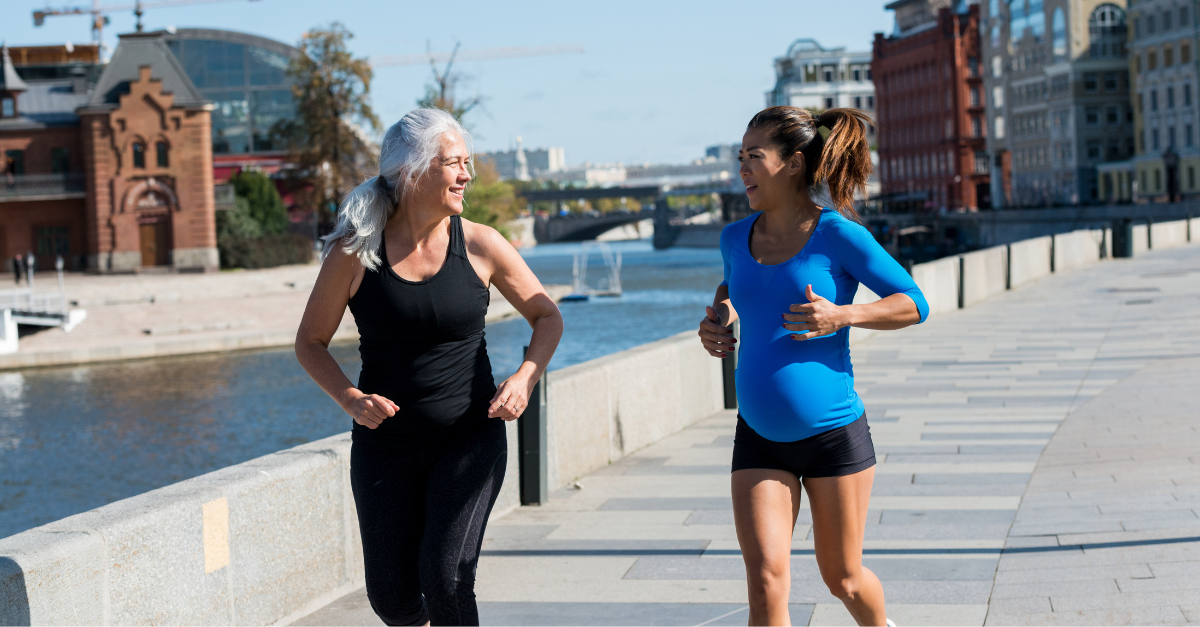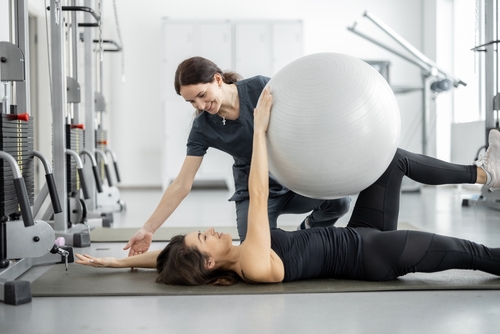Make an Appointment
Life with a newborn can be an overwhelming and exhausting time, and returning to exercise is individual for each new mum. But a common question we hear at Physio Inq Sutherland from Mums is when can I run again safely?
Life with a newborn can be an overwhelming and exhausting time, and returning to exercise is individual for each new mum. But a common question we hear at Physio Inq Sutherland from Mums is when can I run again safely?
Some of the benefits of returning to exercise after pregnancy include:
- More energy
- Improved mood
- Better recovery from birth
- Strengthen pelvic floor
- Weight loss
- Increased fitness
As pregnancy places high demands on the body, and it’s important to respect the changes your body has been through. Here, we’re exploring why pelvic floor exercises are important, how to safely return to exercise after birth, and guidelines for returning to running post-pregnancy.
What Happens to Your Pelvic Floor During Pregnancy and Birth?
Your pelvic floor is responsible for supporting the pelvic organs and creates a seal for the urethra and rectum to prevent incontinence. So, what happens to your pelvic floor during pregnancy and birth?
For starters, your pelvic floor will stretch up to three times its normal size during vaginal birth. Having a baby is, by far, the biggest load your pelvic floor has ever experienced so it makes sense that you’ll likely see a 25-35% decrease in its strength afterwards.
For these reasons, it makes sense that working your pelvic floor after childbirth proves to be an important part of the recovery process. Strengthening your pelvic floor puts you at a lower risk for developing tension in the ligaments that support your pelvic organs. It also helps prevent prolapse, which is when your pelvic organs actually drop, putting more added strain on your already weak pelvic floor.
The good news is, there are exercises you can do to strengthen your pelvic floor. And doing so is a requirement of returning to exercise after your pregnancy.
Guidelines For Running After Childbirth
Every woman’s body is different and the amount of time you’ll need after giving birth before returning to running will vary. However, it might be a quicker turnaround than you’d expect.
A good rule of thumb before you begin any high-intensity exercises such as running is to either cough or jump with a full bladder. If there is any urine leakage, you’re not ready to do any intense exercising as your pelvic floor isn’t quite strong enough yet.
If it’s been three months since having your baby and you’re still having issues with the strength of your pelvic floor, call your GP or make an appointment with a Women’s Health Physiotherapist.
To give you a starting point on your postnatal exercise journey, here are some general guidelines from Sports Medicine NI. Again, be sure to consult your doctor or Women’s Health Physiotherapist before returning to exercise or sport after giving birth. You might decide that postnatal group consultations would help your exercise and recovery plans.
While exercising is certainly safe in most cases for new mums, it’s important to work with a physiotherapist who can give you peace of mind about how and when to start exercising after giving birth.
Strengthening your pelvic floor and reintroducing your body to an exercise routine will take time and working with a physio can help you stay motivated and healthy.

Immediately after Birth
The safest, most low-risk exercises you can do after having your baby (even in the first few days after birth) are pelvic floor muscle exercises such as kegel exercises and pelvic tilts as well as abdominal bracing, which is deep breathing while tightening your abdominal wall on the exhale.
Pelvic Floor Exercises
Kegel exercises strengthen the lowest part of your pelvic floor and vagina by activating the muscles you use to hold a wee. Hold for a count of 8 and relax for a count of 8, repeating 10 to 12 times.
To do a pelvic tilt exercise, lie on your back with your feet flat on the ground and knees facing the ceiling. Flatten your lower back against the floor as you tilt your tailbone toward your feet. You’ll feel your pelvis start to rotate as you tighten your abdominals. Release the position as you allow your back to arch and your pelvis returns to its neutral position. Repeat this exercise 10 to 12 times.
Progression to Exercise
Prior to return to running, there are other ways to gradually start incorporating exercise into your life after having a baby. Some low-risk postnatal exercises include:
- Walking
- Foot and ankle circles
- Swimming
- Postnatal Pilates
- Postnatal yoga
- Postnatal group physiotherapy exercise and recovery program
- Low-impact aerobic training
- Weight training with light weights
- Cycling
Please note that exercises such as sit-ups, curl-ups, planks, hovers, and mountain climbers are not recommended for postnatal mums. A full pelvic floor physiotherapy check should be completed before returning to these types of exercises.
At Physio Inq Sutherland, we are ready to provide you with the checks, advice, training, and programs to get you back into running postnatal! Contact us today for a Women’s Health Physio appointment in our private room.
Date Published: Monday, May 3, 2021
Date Modified: Tuesday, July 2, 2024
Locate a Women's Health
Service Near me
Get the experience & convinence you deserve to support your or a loved one's allied health needs.
Our Women's Health team are currently serving & taking appointments in the following states and regions in Australia:
New South Wales
Queensland
Western Australia
Victoria
Need to get into direct contact with ur Client Services team? We're all ears. Call our team directly on 1300 731 733
Explore Articles
By Popular Topics
Explore Articles
By Allied Health Services
Explore Articles
By Body Parts

Explore Articles by Allied Health Services





